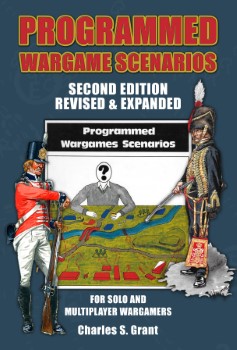So I played two more turns. Most of the action was exchange of fire, and Red failed a couple of command rolls, seriously halting the offensive towards Blue. One morale results also forced one of Red's infantry units in the centre to charge out of revenge, but the charged failed miserably. So I called the game, and gave victory for Blue.
Here's the end situation, on all 3 sections of the battlefield.
 |
| The middle section, with Red having lost 4 infantry units, seems a lost cause for the offensive. |
 |
| Red's left flank, where a feint attack was started, but the situation ended in a stalemate. |
 |
| Red's right flank, nothing much happened here on both sides. |
One might think the scenario failed, because Red didn't manage to take Blue's position, but it's sometimes too easy to ally oneself psychologically with the attacking force in a solo game. If Blue would have been played by a player, Blue would claim a major victory!
Nevertheless, Red could have done things differently. Too many units were locked up on the flanks, taking a more passive role as per the initial orders. In a "real game", these units would have advanced as well. Red could have used his artillery better, now they were mostly useless. But that's precisely the fun part about these programmed scenarios: you get a plan of action, and you should try to stick to it as closely as possibly. And yes, I did learn something -- that attacking in the centre without a good follow-up on the flanks is not a good idea :-)
Also, the Programmed Wargames Scenarios book provides an outline of a plan, but as a solo player, you still have to implement it at the lower unit-level detail. So I don't regard such games as "me against the AI", or "one AI against another AI", but more as a learning exercise, a way to try things out, and see what works and doesn't work with the rules you're using.
To the next scenario!
























